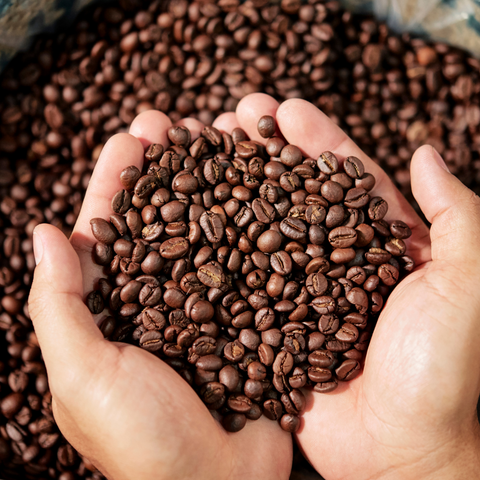For those who savor the morning ritual of grinding freshly roasted coffee beans, there's an undeniably compelling allure to the perfect cup of joe. Yet, as much as we extol the virtues of single-origin beans and precise brewing techniques, the key to great coffee can rest in one of the most overlooked factors: storage. Understanding how to preserve the flavors locked within those beans from the moment they're roasted to the second they meet hot water is an art form. Here's a robust exploration of coffee storage—the indispensable tool for any coffee connoisseur who truly cherishes quality.
Coffee Storage Basics
When it comes to coffee storage, knowledge is your best asset. But before we discern the nitty-gritty, it's crucial to grasp the enemies of freshness:
-
Air: Oxidation happens when coffee comes into prolonged contact with the air, robbing it of its flavors and aromas.
-
Moisture: Excess moisture leads to moldy or stale-tasting coffee, distinct from the beverage's inherent richness.
-
Light: Ultraviolet rays can degrade the compounds that give coffee its taste, and while this isn't as significant a concern as air and moisture, it's worth mindful avoidance.
-
Heat: High temperatures can speed up the degradation of coffee, albeit not at the rate of air and moisture.
An expedition into coffee storage, much like your beans, is best served with care and patience.
Coffee Storage Methods
The quest for the perfect storage method is as nuanced as the flavor notes in a premium coffee blend. Here are some prevalent approaches:
Vacuum Seal Canisters
The vacuum seal method is an effective barrier against coffee's most prominent foe—air. Removing the majority of the air in the canister before sealing creates a protective environment that can prolong the beans' lifespan significantly.
Airtight Containers
A step less vigorous but still commendable, airtight containers offer a sanctuary against air and, to a lesser extent, moisture. The key here lies in ensuring the seal is as airtight as promised.
The Freezer Debate
Plunging your beans into sub-zero storage might seem like a swift and surefire defense against time, but the reality is more complex. For the freezer to be beneficial, you need to store your coffee beans without frequent thawing and freezing—a consistently low temperature is the goal. Otherwise, you risk condensation, which is a coffee-ruining culprit.
Dark, Cool, and Dry
Simple yet effective—store your coffee in a cool, dark, and dry place. A pantry or cupboard absent from any heat sources is a wise choice. The key here is to avoid daily in-and-out coffee retrieval because fluctuations in storage temperature can be as detrimental as constant exposure to slightly high temperatures.
The Factors of Freshness
Freshness is the cardinal virtue of good coffee, and several factors play into maintaining it:
Roasting Date
Coffee has a peak flavor period, usually a few days to weeks after roasting. After that window, the degradation process begins.
Grind Time
Once ground, the surface area of the coffee is dramatically increased, causing flavors to escape quickly. Aim to use your ground coffee for the freshest brew within 15 minutes.
Brew Date
After brewing, coffee starts to taste stale within about half an hour. If you can't drink up immediately, transferring your brew to a thermal carafe can help keep the taste intact.
Myths and Truths
Dispelling common myths can provide clarity in the pursuit of the freshest brew. Here are two to ponder:
"It's All Relative"
Not quite. For storage, the rule of thumb for coffee is absolute freshness. The elements listed above—air, moisture, light, and heat—are the foes. Learning to control them can be your most potent arsenal in the battle.
"Storage Doesn't Matter Unless You're a Snob"
Coffee, like all fresh produce, degrades over time. Proper storage isn't about elitism; it's about savoring the fullness of the beans' potential.
The Art of Consumption
An often neglected facet of the coffee ritual is the art of consumption. Ensuring that your storage ritual complements the additional steps is critical to reaping the complete satisfaction of your carefully selected beans.
Machine and Method
Different brewing methods—french press, espresso, pour-over—extract flavors in unique ways. Adapting your coffee to the machine's peculiarities can enhance the experience.
The Water You Choose
Water quality makes a significant difference. Filtered water can elevate the taste profile, while complex or chlorinated water can detract from the coffee's flavors.
Beyond Storage: Prolonging the Life of Your Beans
While storage is pivotal, there are a few extra tips that can help you maximize the life of your coffee beans:
Buy What You Need
Purchasing coffee in small, frequent batches can mitigate the need for extended storage altogether, ensuring the highest level of freshness in each cup.
Know Your Beans
Different types of beans—Arabica vs. Robusta, light roast vs. dark roast—have different ideal storage times and conditions.
Treat Yourself to the Best
If you're devoted to the coffee experience, consider investing in specialty containers and preserve your investment with the same ardor you'd apply to fine wine.
The Verdict on Variability
Much like the drink itself, coffee storage is a blend of science and art. While there are steadfast principles, a pinch of variability is still in order. Climate, bean type, and personal tastes add inflection points.
The universe of coffee invites exploration—one as varied and intense as the cups it offers. Adhering to a mindful storage routine won't just prolong the life of your coffee but enhance your appreciation of it. Because when that aroma rises from the cup, all those careful decisions translate into one exquisite moment.
In conclusion, integrating these storage tips into your coffee routine can make every sip a celebration of patience and precision. This daily delight resonates far beyond the mere taste buds. Drink deeply, and strive for the coffee experience that transcends the daily grind.



